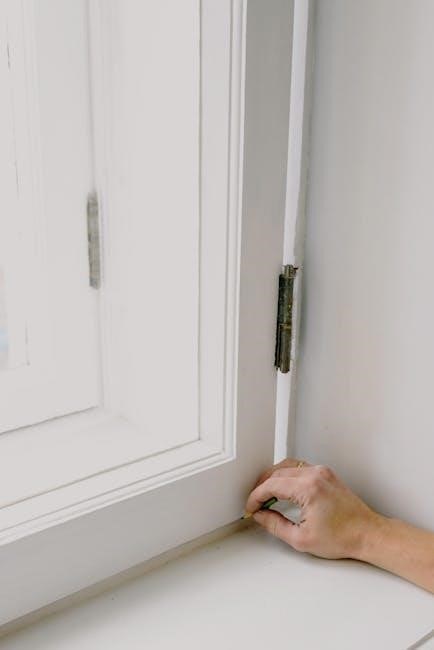V8JS is a powerful PHP extension that embeds Google’s V8 JavaScript engine, enabling PHP scripts to execute JavaScript code. It’s ideal for server-side JavaScript execution, offering high performance and compatibility with CentOS 7 systems.

Prerequisites and Compatibility Check

Ensure your CentOS 7 system meets V8JS requirements, including a compatible PHP version and updated V8 engine. Verify system compatibility to avoid installation issues, as outdated versions may cause conflicts or errors.

2;1 Checking CentOS 7 Version
To ensure compatibility, verify your CentOS 7 version using the command cat /etc/centos-release. This confirms your system is running CentOS 7.x, which is essential for installing V8JS. An outdated or incorrect version can lead to installation issues.
2.2 Checking PHP Version Requirements
Verify your PHP version using php -v to ensure it meets V8JS requirements. V8JS typically requires PHP 7.2 or higher. If your version is outdated, update PHP to avoid compatibility issues during installation. This step is crucial for a smooth setup of V8JS.
2.3 Ensuring V8 Compatibility

Ensuring V8 compatibility is a critical step in installing V8JS on CentOS 7. The default V8 library available on CentOS 7 may be outdated, leading to compatibility issues with V8JS. To resolve this, you can either update V8 to a compatible version or compile it from source. If you encounter an error indicating that libv8 must be version 6.6.313 or greater, it confirms that your installed V8 is too old. To fix this, you can manually compile the V8 engine from its repository. Clone the V8 repository and compile it using the provided build tools like ninja. This ensures you have the latest and most compatible version of V8 for V8JS. Always refer to the official V8JS documentation for the most accurate and up-to-date instructions. Additionally, ensure all dependencies are installed to avoid compilation errors during the process.

Installation Methods for V8JS
V8JS can be installed on CentOS 7 using PECL for a streamlined process or by manually compiling from source. Additionally, yum packages may be available, though versions might be outdated.
3.1 Installing V8JS Using PECL
Installing V8JS via PECL is the most straightforward method for CentOS 7 users. Begin by ensuring you have the PHP Extension Community Library (PECL) installed. Run the command sudo yum install php-pear to install PECL. Once PECL is installed, proceed with the V8JS installation by executing sudo pecl install v8js. This command downloads and compiles the V8JS extension automatically. After installation, enable the extension by adding extension=v8js.so to your php.ini file. Restart your web server or PHP-FPM service to apply the changes. If the installation fails, check for compatibility issues with the installed V8 library version, as CentOS 7’s default packages may be outdated. In such cases, manual compilation might be necessary. PECL installation is recommended for its simplicity but may require additional steps to ensure V8 compatibility.
3.1.1 Steps to Install V8JS via PECL

Installing V8JS via PECL involves a few straightforward steps. First, ensure PECL is installed on your CentOS 7 system by running sudo yum install php-pear. Once PECL is installed, proceed to install V8JS using the command sudo pecl install v8js. This command will download and compile the V8JS extension automatically. After the installation completes, you’ll need to enable the extension. Locate your php.ini file, typically found in /etc/php.ini, and add the line extension=v8js.so at the end of the file. Finally, restart your web server or PHP-FPM service to apply the changes: sudo systemctl restart httpd for Apache or sudo systemctl restart php-fpm for Nginx. If the installation fails, ensure your system meets the V8 compatibility requirements, as CentOS 7’s default V8 library may be outdated. This method is efficient but may require additional steps for compatibility.
3.1.2 Enabling the V8JS Extension in PHP

To enable the V8JS extension in PHP on CentOS 7, locate the php.ini file, typically found in /etc/php.ini. Open the file in a text editor and add the line extension=v8js.so at the end. This directs PHP to load the V8JS extension. After saving the changes, restart your web server to apply them. For Apache, use sudo systemctl restart httpd, and for Nginx with PHP-FPM, use sudo systemctl restart php-fpm. Ensure there are no compatibility issues with the V8 library version, as CentOS 7’s default may be outdated, requiring manual compilation. Verify the extension is loaded by creating a PHP script with phpinfo or testing JavaScript execution to confirm functionality.
3.1.3 Verifying V8JS Installation
After installing and enabling V8JS, verify the installation to ensure everything works correctly. Create a PHP script containing phpinfo and check for the V8JS section, confirming the extension is loaded. Additionally, test JavaScript execution by writing a PHP script that uses V8JS functions, such as creating a V8 context and executing a simple JavaScript snippet. For example:
execute('1 + 2'); ?>

If the script outputs 3, V8JS is functioning properly. You can also check the V8 engine version using v8js_version
to ensure compatibility. If issues arise, review installation logs or check for missing dependencies. Restarting your web server after enabling the extension is crucial for changes to take effect. Successful verification confirms that V8JS is properly integrated into your PHP environment on CentOS 7.
3.2 Manual Compilation and Installation
Manual compilation of V8JS offers greater control, especially if the default packages are outdated or incompatible. Begin by installing essential build tools like gcc, cmake, and ninja. Clone the V8 repository using depot_tools, which simplifies fetching and managing dependencies. Navigate to the V8 directory and configure the build with specific flags to enable JavaScript engine features. Use ninja to compile V8, which may take considerable time. After successful compilation, install the V8 library system-wide. Next, download the V8JS PHP extension source and configure it to link against the manually installed V8 library. Compile the extension using PHPize and install it. Finally, enable the extension in your PHP configuration and verify its functionality with a test script. This method ensures you have the latest V8 features but requires careful attention to compilation flags and version compatibility.
3.2.1 Cloning Depot Tools and V8 Repositories
Begin the manual installation by cloning the necessary repositories. Install Git if not already present: sudo yum install git. Clone the Depot Tools repository: git clone https://chromium.googlesource.com/chromium/tools/depot_tools.git. Add Depot Tools to your PATH: export PATH=$(pwd)/depot_tools:"$PATH". Next, create a directory for V8 and navigate into it. Use gclient config --unmanaged to configure gclient. Finally, fetch the V8 project: gclient sync. This step retrieves the V8 source code and its dependencies, preparing your system for compilation. Ensure you have sufficient disk space and time, as this process can be resource-intensive. These repositories are essential for compiling V8 from source, enabling you to bypass outdated versions available through package managers.
3.2.2 Compiling V8 Engine from Source
After cloning the repositories, navigate to the V8 directory and create a build configuration using gn. Specify the build directory and enable necessary features: gn args out/Release --ide=vs --v8-target-platform=linux64. Use ninja -C out/Release to compile the V8 engine. This process may take significant time due to the complexity of the source code. Ensure all dependencies like GCC and CMake are up-to-date, as CentOS 7’s default versions may be insufficient. If compilation fails, check for missing libraries or compatibility issues. Compiling V8 from source ensures you have the latest version, avoiding outdated packages. Be patient, as this step is critical for a successful V8JS installation. Proper compilation is essential for integrating V8 with PHP.
3.2.3 Installing V8JS Extension Manually
After successfully compiling the V8 engine, the next step is to install the V8JS extension manually. This involves configuring and compiling the V8JS source code to integrate it with your PHP environment. First, download the V8JS source code from the official repository. Use phpize to prepare the extension for compilation. Then, configure the extension by running ./configure --with-v8js=/path/to/v8/install, ensuring the path points to your compiled V8 library. After configuration, compile the extension using make and install it with make install. This places the v8js.so file in your PHP extensions directory. Finally, enable the extension by adding extension=v8js.so to your php.ini file and restart your web server or PHP-FPM service; This manual installation ensures compatibility with your custom-compiled V8 engine, providing full functionality for JavaScript execution in PHP on CentOS 7.
Installing V8JS on CentOS 7 provides a robust environment for executing JavaScript within PHP applications. By following the steps outlined, you’ve successfully integrated the V8 JavaScript engine, unlocking powerful capabilities for server-side JavaScript execution. Whether you used PECL for a streamlined installation or manually compiled the V8 engine and V8JS extension, your system is now equipped to handle modern JavaScript workflows. For developers, this opens doors to innovative applications, such as server-side rendering of JavaScript frameworks like Vue.js or React, and real-time data processing. Next, explore integrating V8JS into your projects, experiment with JavaScript execution in PHP, and leverage its performance benefits. Ensure to keep your V8 and V8JS versions updated for optimal functionality and security. With V8JS installed, you’re ready to take advantage of JavaScript’s versatility directly within your PHP ecosystem.



